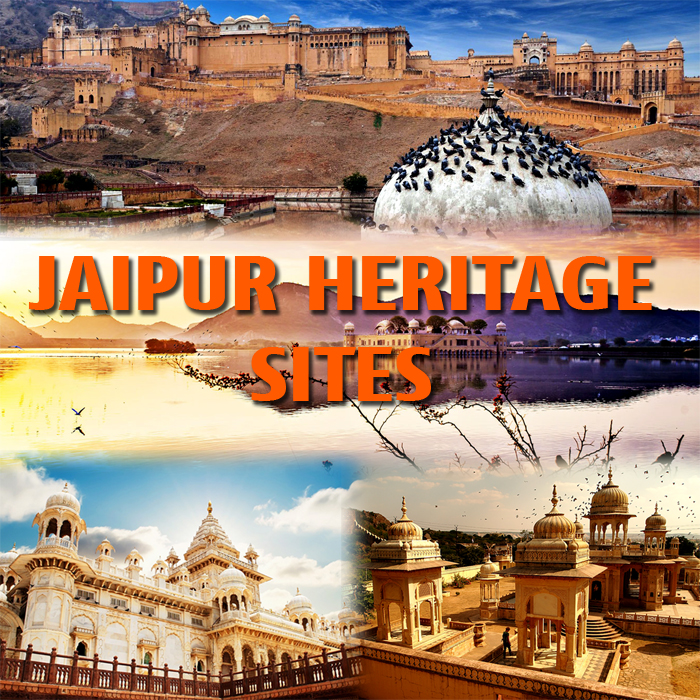
Jaipur is one of the most vibrant and colorful capital of Rajasthan with its rich culture and traditions since ancient times. It is known as the land of warriors and beautiful princess who even chose to die for saving their chastity and had a great affinity with their motherland. Whether it is the cuisine or their Pehnawa everything is unique about Jaipur culture. There are many famous forts and palaces along with wildlife sanctuaries and other monuments which have attracted thousands of visitors and some of them have become a part of UNESCO World Heritage Site as well.
In support of this day, let us explore Jaipur’s marvelous epitome of great heritage- Amer Fort– the UNESCO’s World Heritage Site and other fathoming epitomes of grand heritage in Jaipur. And, if you are a lover of the wild, culture and history, then visit Jaipur and celebrate this day by visiting some of its Heritage Sites.
1. Amer fort:
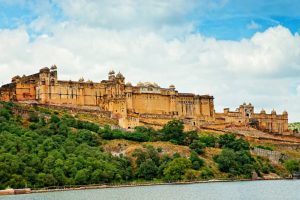 This massive fort-palace complex built in hybrid Hindu-Muslim style dates back to Raja Man Singh and was the royal palace of the Kachwahas from c. 1600-1727. It’s one of six world heritage forts in Rajasthan. The main sights within the fort include the Sheesh Mahal, adorned with thousands on thousands of mirror tiles on the walls and ceiling. It’s a bit of a hike up from the town, and the touristy thing to do is to ride on an elephant to the top.
This massive fort-palace complex built in hybrid Hindu-Muslim style dates back to Raja Man Singh and was the royal palace of the Kachwahas from c. 1600-1727. It’s one of six world heritage forts in Rajasthan. The main sights within the fort include the Sheesh Mahal, adorned with thousands on thousands of mirror tiles on the walls and ceiling. It’s a bit of a hike up from the town, and the touristy thing to do is to ride on an elephant to the top.
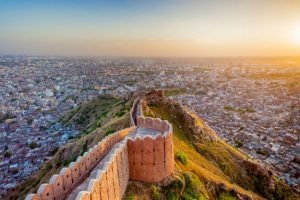
The smallest of the three forts, notable primarily for excellent views over Man Sagar lake and the vast sprawl of Jaipur. Built in 1734 by the Maharaja Sawai Jai Singh II in a mix of Indian and European styles. The Abode of Tigers, Nahargarh was once a strong defense ring, creating a tough protection for Amer and Jaigarh. The fort comprising 7 palaces within its walls offers the highest point, which happens to be a restaurant called ‘Padao’ gives awesome aerial view of the city from top. The recently inaugurated zoo, wax museum and Sculpture park at Nahargarh are added treat for the visitors.
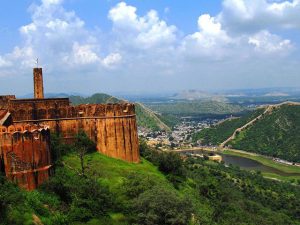
Never conquered in battle, this was considered the strongest of the three forts in the area. It is best known as the site of the world’s largest cannon, the Jaivana. A better reason to visit the fort, though, are the scenic gardens at the other end and the spectacular views over the Amber Fort and the hills around.
4. Albert Hall:
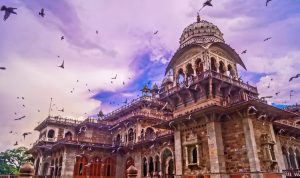
The Albert Hall Museum or the Central Museum, , sited amid the gardens of Ram Niwas Bagh in Jaipur. It is the oldest museum of the state and functions as the State museum of Rajasthan. The building itself became an integral part of the display, its Indo-Saracenic architecture and stone ornamentation, became a source of reference for varied classical Indian styles of design from Mughal to Rajput.
5. City Palace:
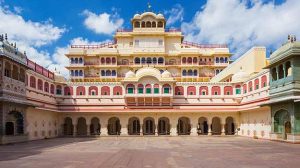
The City Palace in Jaipurwas once the seat of kings as it was from here that they ruled the region. One of the best tourist spots in the city, the City Palace is a vast complex and includes several buildings, courtyards and gardens. It is home to several palatial structures like the Chandra Mahal, (home to present Maharajah of Jaipur), Mubarak Mahal (housing a textile museum), Diwan-e-Khas (or Hall of Private audience housing the two largest silver vessels in the world, which are duly mentioned in the Guinness book), the Diwan-e-Aam ( or Hall of Public Audience) and the gateway Ridhi Sidhi Pol (with four small doorways decorated with motifs depicting the four seasons).
6. Hawa Mahal:
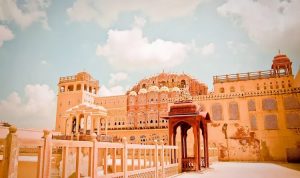
Built in 1799 by Maharaja Sawai Singh as part of City Palace, it was an extension of the Zenana (women’s) chamber. Its purpose was to allow royal ladies to observe everyday life in the street below without being seen. It is a five storey high red sandstone structure complete with over 950 windows. The breeze (or hawa) circulates through these windows, giving the palace its name.
7. Jal Mahal:
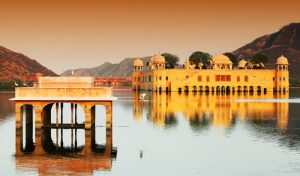
Jal Mahal is a mesmeric five storey palace with just top two floors visible in the middle of Man Sagar Lake. It is a romantic place as it is built in red sandstone. This Mahal is located 6 kms before Amber fort on Amber fort Road outside Jaipur.
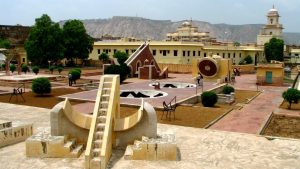
Jantar Mantar, UNESCO world heritage site is the largest of five astronomical observatories build by Maharaja Jai Singh during the period 1727-1734 in north India. The observatory consists of fourteen major geometric devices (or yantras in Hindi) for measuring time, predicting eclipses, tracking stars in their orbits, ascertaining the declinations of planets and determining the celestial altitudes etc.
Rajesh
7 years agothis is the best blog with content.
kanika sharma
7 years agoAwesome Heritage places jaipur has !!